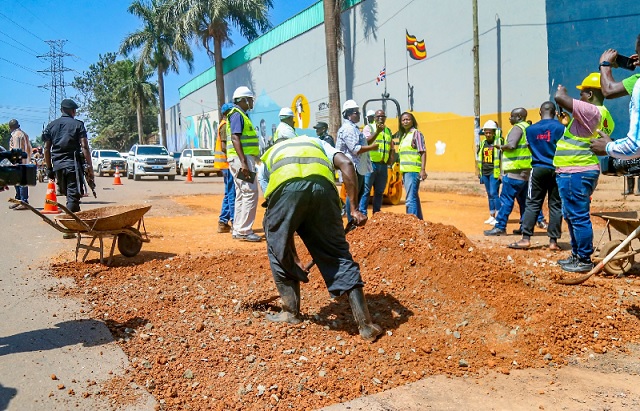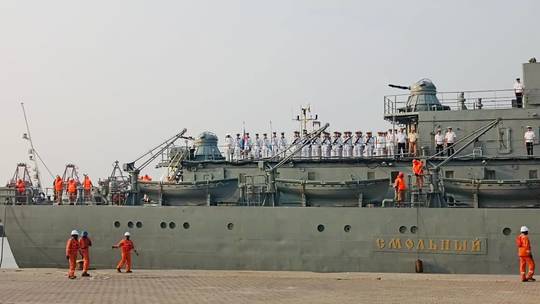Who is Responsible for Shortcomings on City Road Projects?
While residents and users of the roads welcome the completion of the roads, complaints of storm water and flash floods, as well as the government’s ability to keep the roads well-maintained, dent the appraisal of the projects. Kampala, being a hilly area, runaway water is an aspect that is or should be on the mind of any developer, whether of roads, buildings, or any construction.

In 2018, Kampala Capital City Authority (KCCA) embarked on the upgrade and reconstruction of city roads, targeting some of the most worn-out roads. These were done with financing from the World Bank under the Second Kampala Institutional and Infrastructure Development Project (KIIDP 2) and the African Development Bank under the Kampala City Roads Rehabilitation Project (KCRRP).
While residents and users of the roads welcome the completion of the roads, complaints of storm water and flash floods, as well as the government’s ability to keep the roads well-maintained, dent the appraisal of the projects. Kampala, being a hilly area, runaway water is an aspect that is or should be on the mind of any developer, whether of roads, buildings, or any construction.
A tour of Kulambiro Ring Road shows that residents are generally happy with the road, which is part of the wider project encompassing Nakawa-Ntinda Road, Kulambiro Ring Road, and Najeera Link, and John Babiiha (Acacia), a beneficiary of the KIIDP2. Poor drainage, Kamya Joseph Katende, the Chairperson of Kigoowa II LC1, says the roads have greatly changed the look of the area and made the city neighborhood a place worth the name.
However, they have a problem with the drainage system. Being that Kigoowa II is on the lower side of Kulambiro Ring Road, they suffered runoff water during the construction of the road, and the problem has persisted up to now. He says the contractor, according to the information given during consultative meetings and the joint neighbourhood monitoring team, did not accomplish all that had been promised.
Kamya cites the number of drainage channels and planned or promised extension of the channels up to the stream and the clearing of the stream itself as the measures that were supposed to be put in place to cater for the runaway water.
This was reechoed by his Kasaana LC1 counterpart, who feels that the drainage channels were too small and are easily overrun by water during heavy rains.Ā
The two men say they have complained to KCCA and the city authorities sometimes go and clean the road, including unblocking clogged channels, but the impact does not last before floods ravage their properties again. On what they have done as residents, Kamya says they even declined to sign the road completion form as is supposed to be, because what was promised has never been completed.
He, however, says that they will continue demanding that the rest of the work be done despite the fact that there is so far no response.
Efforts to get responses from City Hall were futile as the letters requesting information had yet to be responded to, two weeks later. Similar sentiments about stormwater were expressed for East Konge Road in Makindye Division, a 1.4 Km project funded by the African Development Bank. The road runs from Lukuli Road up to the Konge hilltop, making drainage an important aspect.
Robert Settuba, the LC1 Chairman for Upper Konge 1 in Makindye, says a lot of water runs downhill up to Lukuli road into the shops on the roadside. However, he says, a sport called Namuli Suits along the East Konge Road is the worst hotspot as the water from up the hill is channeled to a road that branches off, and runs into the settlements downhill.
He says that when the contractor, FICAH Enterprises Ltd, was contacted about the water, the company said that it did what it was told to do by KCCA, that is, working on the road from the hilltop to the main road. Settuba says they submitted complaints to KCCA and were told that they would work on the drainage if they got money, which was not yet available.
To note, on the East Konge Road, FICAH Enterprises was a second contractor, replacing Summit Projekts Ltd, whose contract was terminated after it failed to raise funds to continue with the works. This led to more delays, considering that all these projects were initially delayed by the outbreak of COVID-19, which led to lockdowns starting in early 2020.
When Summit abandoned the works, Chairman Settuba says, residents suffered even more, because the abandoned roadworks, coupled with rains, made it impassable, but the problem of runaway water worsened, and KCCA says it could not do anything since the road already had a contractor. Having got no response from the division authorities, the residents had to pick up their own tools to try and tame the water, but the load was too much for them, according to the chairman, and they had to wait till a new contractor was deployed.
Makindye Urban Division Engineer, Danson Agaba, said that they are now aware of the floods ravaging the communities because of the new road, but that now that they had wind of it, they would go to inspect the road. He says that it will not be a hard task because the drainage channels are there, and that he thinks the contractor can easily channel that water into the drainage.
He says that there are still a few days left on the retention period. This is a period, usually one year, in which the procuring entity or owner of the project, together with the contractor, monitors the project for any possible defect. Some part of the contract money is withheld, and, should there arise issues, this money is used to cover the cost of rectifying them. If there are no defects detected within this period, the contractor is then fully paid.
The 1.3-kilometer road project was planned to cost 4.44 Billion Shillings, according to information at the Government Procurement Portal (GPP). It is not clear how much it costs after the delays that took more than a year. While Eng. Agaba says the delays did not affect the final cost, he declined to say how much the final figure was, referring us to the contractor. Frank Wasswa Ssengendo, the Managing Director of Ficah Enterprises, said he had no authority to speak without KCCA approval.
CoST Uganda, an initiative that promotes transparency in public infrastructure projects, says that disclosing data from public infrastructure investment helps to inform and empower citizens, and enables them to hold decision-makers to account. Uganda Radio Network sought the views of Roland Balimwezo, a private Engineer, on these shortcomings and other issues arising from the projects. Balimwezo, who happened to be chairperson of Nakawa Urban Division Council during the implementation of the Nakawa-Ntinda and Kulambiro Ring roads in the division, also noted that stormwater was not well catered for and has been a menace to the people.
The project was implemented by China State Construction Engineering Corporation Limited. Asked about where there was a climate component in the financing, he says, this was not mentioned anywhere. On its part, the Public Procurement and Disposal of Public Assets Authority (PPDA) says there is no excuse for either the contractor or KCCA for not taming stormwater.
With or without a climate financing component, Cris Magoba, the Manager, Corporate and Public Affairs at PPDA, says that in the bidding contract, storm water is embedded, and that the procurement entity must ensure the contractor provides for Environmental, Social, Health, and Safety (ESHS), and this includes storm water.
On what happens to ensure that both the procuring entity and the contractor do a good job, PPDA has a role as the enforcer of standards, accountability, and transparency in the procurement process.
Magoba says that they design and issue the bidding documents to the procuring entity and that the entity, in this case, KCCA, is supposed to abide by the procedure as set out. He adds that PPDA monitors the development of the project to ensure that this happens.
So, what happens when it is revealed that contractual or procurement obligations were violated? Magoba says there are penalties, including prosecution of responsible officials, fines, or blacklisting a contractor, among others, depending on the nature of the violation and the person involved Ā
He advises that of the projects have these defects, then KCCA and the contractors should use the defect liability period to assess and find remedies for them.Ā
Cost and Value Eng Balimwezo says the government has committed a lot of resources into road construction, but that the problem is that there is no money provided for maintenance. While the defect liability period is usually between one and two years, the roads are then left at the mercy of nature and this has meant that they deteriorate very fast, calling for even huger amounts of money to repair them.
He advises the government should always plan, in its annual budgets, some resources for each of the road projects.
He says that while most of the funds are borrowed, the government is supposed to cater for the compensation for properties that may be affected by the projects, as well as other minor effects.
In all the contracts, the residents were asked to give up land for free, and in all the cases, they agreed to, without compensation.
However, the land surrendered by the public is not evaluated, which means that the addition or contribution of the community, while vital, cannot be put in monetary terms. So, Eng Balimwezo says, therefore, that KCCA or the government cannot tell the value of the assets in terms of the roads that they have. In addition to this, the World Bank, in appreciation of the gesture by the communities, ādonatedā two extra roads; the one connecting from Ring Road to Kungu and another to Kira.
According to the documents at KCCA, the 1.7 Kilometre Babiiha Avenue cost 2.275 Million Dollars (8.4 Billion Shillings at the time) per kilometre, resulting in a total cost of 3.981 million (14.73 Billion Shillings), excluding the cost of resettlement of affected persons (RAP) that was budgeted at 18.794 Billion Shillings.
Data also shows that the initial cost of the 2.8 Km Nakawa-Ntinda road project was 2.6 Million Dollars (9.6 Billion Shillings) while the total cost was 7.285 million or about 26 Billion Shillings.
The RAP cost was 6.697 Billion Shillings. For Kulambiro Ring Road, which is 3.1 Km long, the initial total cost was 3.457 Million Dollars or 12.789 billion shillings, meaning 4.125 Billion Shillings per kilometre.





